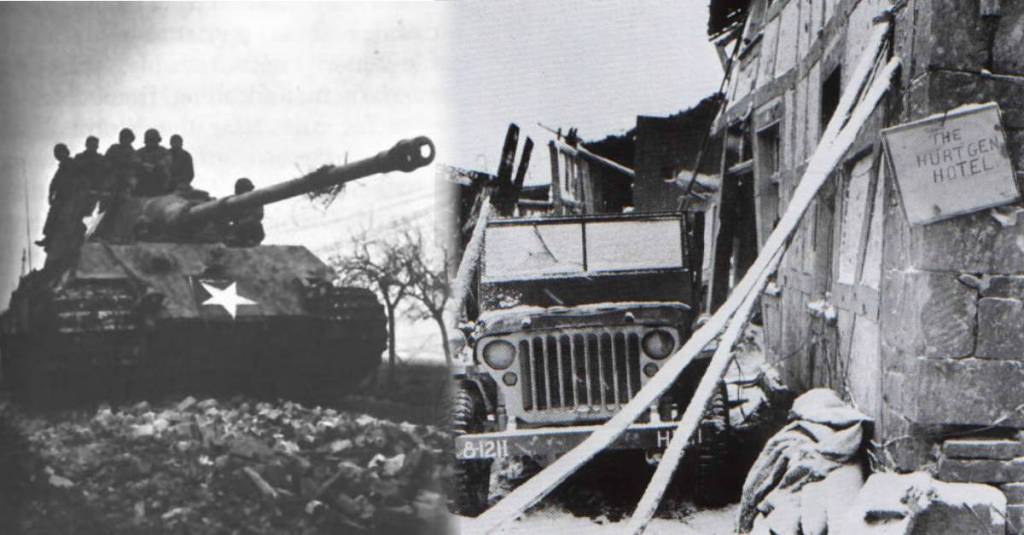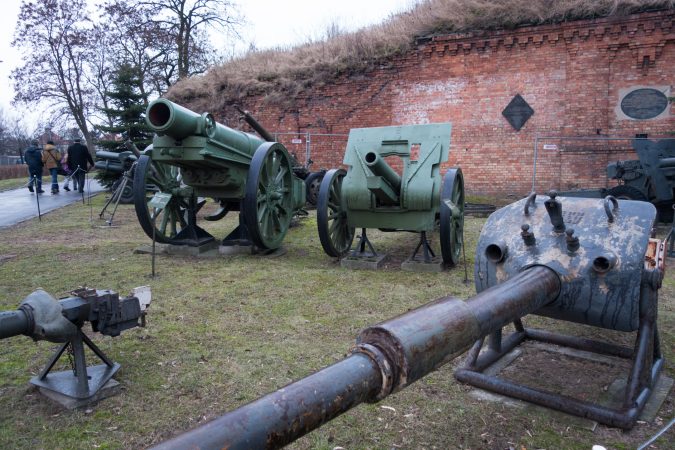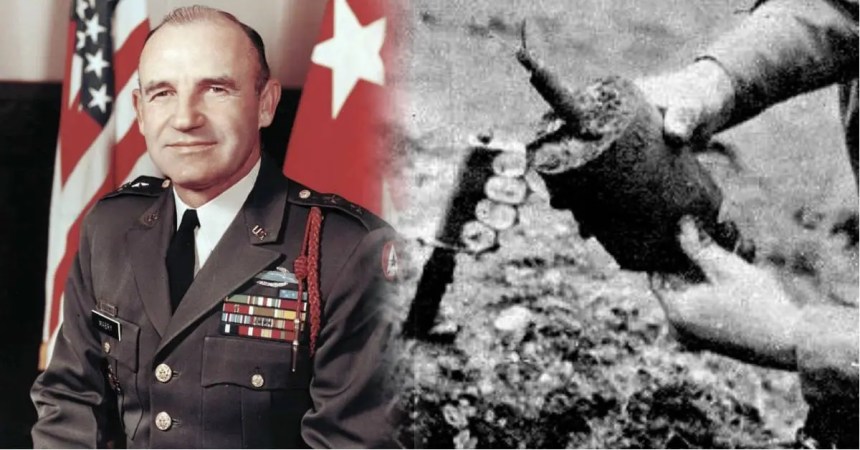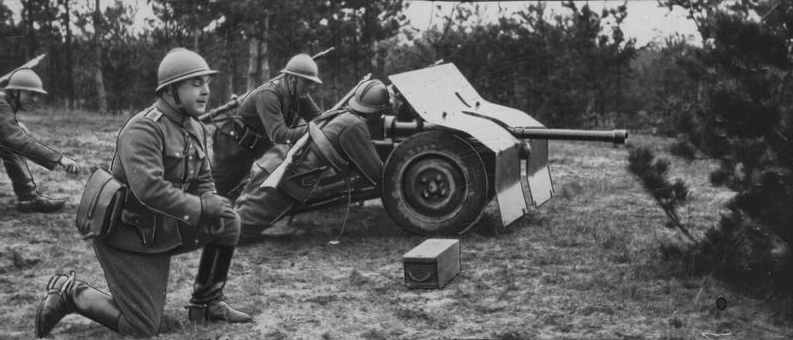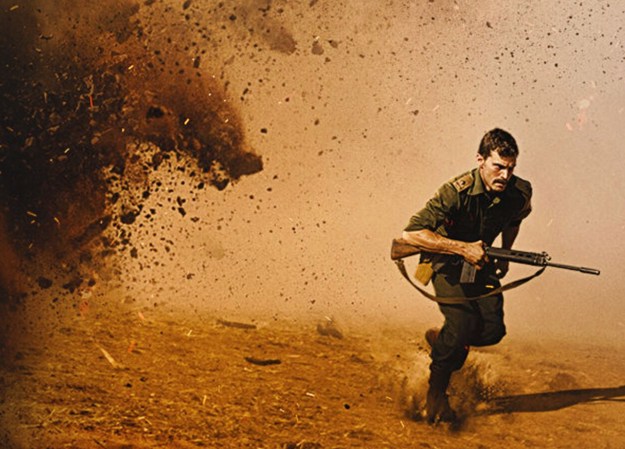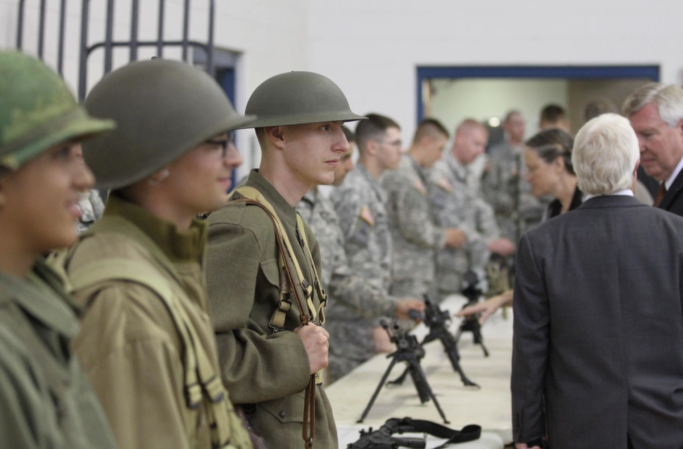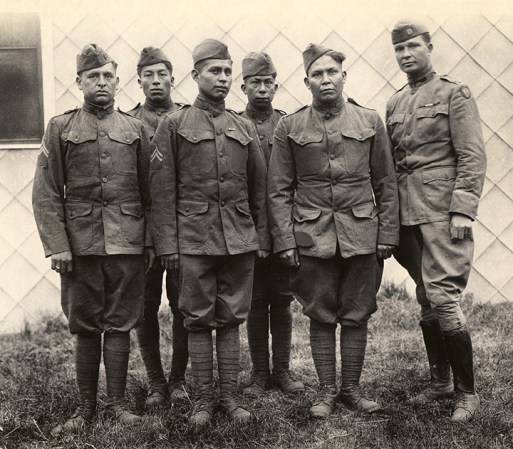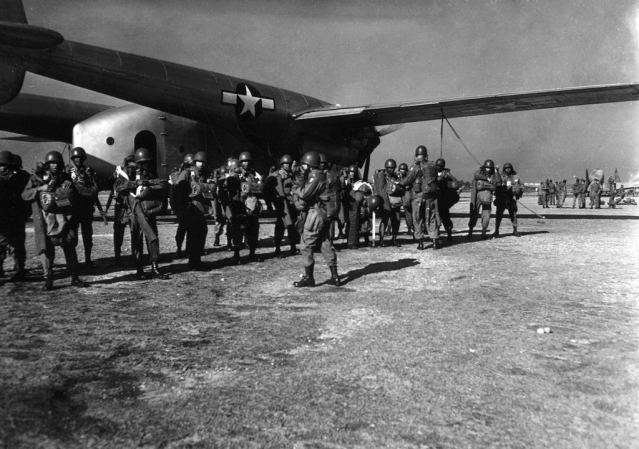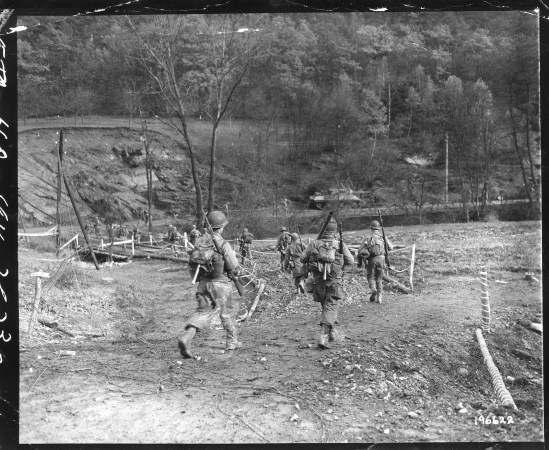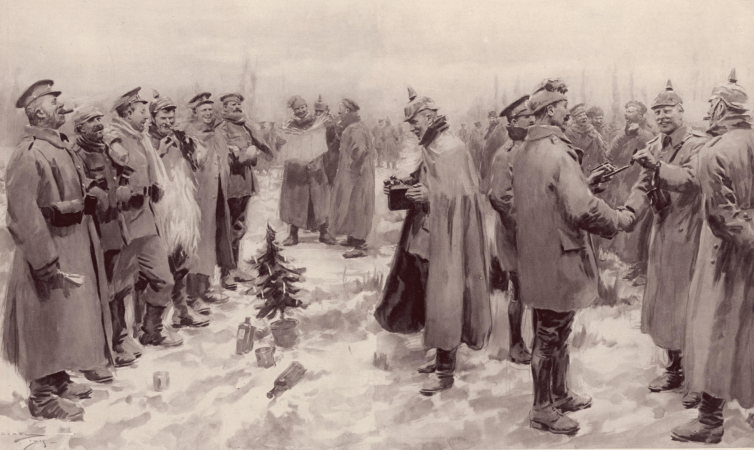The Hürtgen Forest is a massive German timberland where 33,000 Americans were killed and wounded in five months of fighting from Sep. 12, 1944 to Feb. 1945 as artillery batteries dueled, tanks clashed, and infantrymen battled each other nonstop.
The initial American movement into the Hürtgen Forest was a side objective for First Army’s Lt. Gen. Courtney H. Hodges. He was taking a route above Hürtgen Forest to attack Koln, Germany, during the early days of Operation Market Garden.
If he took the forest himself, the woods would become an impossible obstacle for Germans attempting to counterattack on his southern flank. If he did not, he feared the trees would provide concealment to an enemy that could then threaten his belly at any time.
Hodges sent the 9th Infantry Division into the southern part of the forest on Sep. 12. The understrength division initially made good progress into the forest and encountered little resistance. Once they neared the villages and hamlets though, German soldiers began picking apart the attackers.

Bad fog and icy weather prevented American bombing runs most days. The few American tanks available for the battle were forced to fight their way through narrow passes and across tank obstacles, preventing them from reaching much of the fighting. So, the battle quickly became a mostly infantry fight with rifle and mortarmen maneuvering on top of each other, and the Germans had a very real advantage. They had concrete bunkers built under the earth where mortars and artillery pieces were largely incapable of rooting them out.
Those concrete bunkers protected the Germans from one of the biggest dangers in Hürtgen, tree bursts. Artillery and mortar rounds that struck trees would turn the whole things into an explosion of wood shrapnel that could kill or maim anyone exposed to it. This was predominantly the American forces.
The 9th Infantry Division’s last big fight in Hürtgen Forest was from Oct. 6-16, 1944 when they painstakingly made their way through the trees towards Schmidt, Germany with tanks from the 3rd Armored Division. Even with the armor support they only moved the front 3,000 yards while taking 4,500 casualties.
The 9th was finally relieved by the Pennsylvania National Guard’s 28th Division and the 707th Tank Battalion. The 28th’s first attack was characterized by massive artillery barrages and tanks firing shells straight into buildings as the Allies took small towns on the way to Schmidt.

On Nov. 3 the Allies took Schmidt itself, but it was recaptured by the Germans the next morning. The Americans had been unable to get their own tanks up to the town due to impassable terrain. But the Germans came from the opposite side and were been able to bring Panther heavy tanks to bear.
The Americans again struggled to take any important ground until the senior commanders were forced back to the drawing board. This time they relieved the 28th Division with the 4th Division and called the 1st Infantry Division to attack from the north. The weather had finally cleared enough for the planes to bomb en masse and artillery units opened a massive barrage to help destroy German positions.
Despite the bravery of the American soldiers and the support from artillery and the air, most attacks across the front failed due to German artillery and minefields. Maj. George Mabry, a D-Day hero, personally dug mines out of a field with a trench knife to give his men a corridor to attack through. The men rewarded him by being on of the few units to capture their objective in the assault.

The slow progress continued as First Army kept sending new units into the grinder. Three more infantry divisions, an armored division, a Ranger battalion, and elements of the 82nd Airborne Division all marched into the trees. While they killed, wounded, and captured heaps of Germans, all of them took heavy casualties themselves.
The ferocity of the fighting dropped but did not end in mid-December. The Germans had launched the famous Battle of the Bulge to the south and both sides had to send supplies and other assets to support their forces there.
The dwindling German forces in Hürtgen were finally cleared in early Feb. 1945 and America became the owner of a couple of dams and countless trees. The Army took 33,000 casualties to occupy the forest. The battle is described as either a pyrrhic victory or a defeat by most historians. The Army simply lost too many men and got too little in return.
The thrust toward Koln, the offensive that Hodges had been worried would be stopped by a counterattack from Hürtgen, was ultimately successful. First Army took the city on Mar. 6, 1945.


